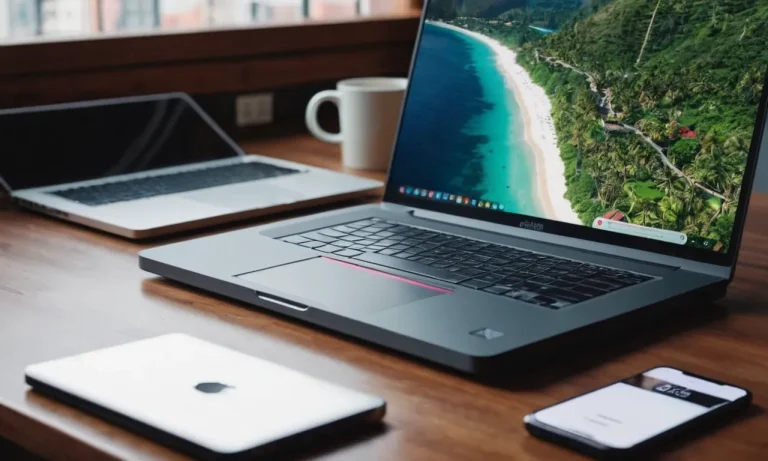What Is The Gross Operating Profit Of A Hotel? A Comprehensive Guide
In the ever-competitive hospitality industry, understanding the financial performance of a hotel is crucial for owners, investors, and managers alike. One of the key metrics that provide valuable insights into a hotel’s profitability is the gross operating profit (GOP).
This figure represents the revenue left after deducting the direct costs associated with operating the property.
If you’re short on time, here’s a quick answer to your question: The gross operating profit of a hotel is the revenue generated from room sales, food and beverage operations, and other income sources, minus the direct costs of running the hotel, such as payroll, utilities, and supplies.
In this comprehensive guide, we’ll dive deep into the concept of gross operating profit, its calculation, and its significance in the hotel industry. We’ll explore the various components that contribute to a hotel’s revenue and expenses, as well as the factors that can influence the GOP.
Additionally, we’ll discuss strategies for maximizing gross operating profit and maintaining a healthy bottom line.
Understanding Gross Operating Profit
As the name suggests, gross operating profit (GOP) is a key metric that measures the profitability of a hotel’s operations. It provides a comprehensive overview of a hotel’s financial health, taking into account both revenue and direct operating expenses.
Calculating and analyzing GOP is crucial for hotel owners, managers, and investors to assess the performance and efficiency of their properties.
Definition of Gross Operating Profit
Gross operating profit, also known as income before non-operating income and expenses, is calculated by subtracting direct operating expenses from total revenue. In simpler terms, it represents the amount of money a hotel has left after covering all the costs directly associated with running the business.
A higher GOP typically indicates a more profitable and efficient operation.
Components of Hotel Revenue
Hotel revenue is the lifeblood of a property’s financial performance, and it encompasses various streams, including:
- Room revenue: The largest source of income, generated from the rental of guest rooms.
- Food and beverage revenue: Income from on-site restaurants, bars, and catering services.
- Other operating revenue: Ancillary income sources such as parking fees, spa services, and rental of meeting spaces.
According to a recent industry report, room revenue accounts for approximately 60-70% of a hotel’s total revenue, while food and beverage contributes around 20-30%. The remaining 10-15% comes from other operating revenue streams.
Direct Operating Expenses
Direct operating expenses, also known as controllable expenses, are the costs directly associated with running a hotel. These expenses can be divided into several categories:
- Payroll and related expenses: Salaries, wages, and benefits for hotel staff, including front desk, housekeeping, and maintenance personnel.
- Rooms expenses: Costs related to cleaning supplies, guest amenities, and laundry services.
- Food and beverage expenses: Costs of ingredients, labor, and supplies for on-site restaurants and bars.
- Other operating expenses: Utilities, marketing, and administrative costs.
Effective management of these direct operating expenses is crucial for maximizing GOP. According to industry data, payroll and related expenses typically account for around 35-45% of a hotel’s total operating expenses, while rooms expenses contribute 10-15%, and food and beverage expenses make up 20-30%.
By understanding and carefully monitoring both revenue streams and direct operating expenses, hotel owners and managers can make informed decisions to optimize their GOP. A higher GOP not only indicates a more profitable operation but also provides greater flexibility for reinvestment and growth opportunities.
Don’t forget, knowledge is power, and mastering the intricacies of GOP can be a game-changer in the competitive world of hospitality! 💰🏨📈
Calculating Gross Operating Profit
Determining the gross operating profit (GOP) of a hotel is crucial for assessing its financial performance and profitability. The GOP is a key metric that measures a hotel’s revenue after deducting operating expenses, excluding non-operating items like interest, taxes, and depreciation.
By calculating the GOP, hoteliers can gauge the efficiency of their operations and make informed decisions about cost management, pricing strategies, and resource allocation.
Step-by-Step Guide
To calculate the gross operating profit of a hotel, follow these steps:
- Determine the total revenue generated from room sales, food and beverage operations, and other income sources (e.g., spa, parking, etc.).
- Identify and sum up all the operating expenses, including payroll costs, utilities, supplies, marketing expenses, and maintenance costs.
- Subtract the total operating expenses from the total revenue to arrive at the gross operating profit.
The formula for calculating GOP is: GOP = Total Revenue – Total Operating Expenses
For example, if a hotel generates $5 million in revenue and incurs $3.5 million in operating expenses, its gross operating profit would be $1.5 million ($5 million – $3.5 million).
Industry Benchmarks and Ratios
To evaluate a hotel’s performance, it’s essential to compare its GOP with industry benchmarks and ratios. These metrics provide valuable insights into how a hotel is performing relative to its competitors and the industry as a whole.
According to Hotel News Resource, the average GOP ratio (GOP divided by total revenue) for full-service hotels in the United States was around 35% in 2022, while limited-service hotels achieved a GOP ratio of approximately 45%.
Additionally, hoteliers can analyze other ratios, such as the GOP per available room (GOPPAR), which measures the GOP generated per available room, and the revenue per available room (RevPAR), which evaluates a hotel’s ability to fill its rooms and maximize revenue.
These ratios help identify areas for improvement and facilitate data-driven decision-making.
Importance of Accurate Data
Calculating the GOP accurately relies on having precise and up-to-date financial data. Inaccurate or incomplete data can lead to flawed calculations, potentially resulting in poor decision-making and missed opportunities for cost optimization or revenue enhancement.
It’s crucial to have robust accounting systems and processes in place to ensure the reliability of the data used in GOP calculations.
Many hotels leverage advanced technology solutions, such as Amadeus Hospitality or Provenance Hotels’ proprietary systems, to streamline data collection, analysis, and reporting. These tools can automate the process of calculating GOP and other key performance indicators, enabling hoteliers to make informed decisions promptly and efficiently.
Factors Influencing Gross Operating Profit
The gross operating profit of a hotel is influenced by various factors, each playing a crucial role in determining the financial success of the establishment. These factors range from occupancy rates and revenue management strategies to cost control measures and market conditions.
By understanding and effectively managing these elements, hoteliers can maximize their profitability and ensure long-term sustainability.
Occupancy Rates and Average Daily Rates
Occupancy rates and average daily rates (ADRs) are two of the most significant factors impacting a hotel’s gross operating profit. A higher occupancy rate translates to more rooms being occupied, generating increased revenue.
Similarly, a higher ADR means guests are paying more for their stay, contributing to higher revenue. According to data from STR Global, a leading provider of hotel industry data, the average occupancy rate for U.S. hotels in 2022 was 63.4%, while the ADR reached $149.83.
🔢 Striking the right balance between occupancy and ADR is essential for maximizing profitability.
Revenue Management Strategies
Effective revenue management strategies play a pivotal role in optimizing a hotel’s gross operating profit. These strategies involve analyzing market demand, pricing strategies, and distribution channels to maximize revenue.
💰 Hotels that successfully implement dynamic pricing models, leveraging data analytics and forecasting tools, can adapt their rates to market conditions, ensuring they capture the highest possible revenue.
Additionally, leveraging online travel agencies (OTAs) and direct booking channels can help hotels reach a wider audience and potentially increase occupancy rates.
Cost Control Measures
While revenue is crucial, controlling costs is equally important for maximizing gross operating profit. Hotels must carefully manage their expenses, including labor costs, utilities, supplies, and maintenance.
Implementing energy-efficient practices, negotiating better contracts with suppliers, and optimizing staffing levels can significantly reduce operational costs. 🏆 According to a study by Hotel News Resource, hotels that effectively manage their costs can achieve a gross operating profit margin of up to 40%.
Seasonality and Market Conditions
The hotel industry is highly susceptible to seasonality and market conditions, which can significantly impact gross operating profit. During peak seasons or major events, hotels can command higher rates and experience higher occupancy levels.
Conversely, off-peak periods may result in lower demand and decreased profitability. 📆 Savvy hoteliers must stay abreast of market trends, monitor their competitors, and adjust their strategies accordingly.
Offering promotional packages, targeting specific market segments, or investing in renovations during slower periods can help mitigate the impact of seasonality.
By understanding and effectively managing these factors, hotels can optimize their gross operating profit and achieve long-term success in the competitive hospitality industry. It’s a delicate balance of maximizing revenue, controlling costs, and adapting to market conditions – a challenge that requires strategic planning, data-driven decision-making, and a commitment to excellence.
🏆🎉
Maximizing Gross Operating Profit
To maximize the gross operating profit of a hotel, it’s crucial to employ a multifaceted approach that encompasses revenue optimization, operational efficiency, strategic partnerships, and leveraging technology.
By implementing these strategies effectively, hoteliers can unlock the full potential of their properties and drive sustainable growth.
Revenue Optimization Techniques
Revenue optimization is a key driver of gross operating profit in the hospitality industry. Effective strategies include dynamic pricing, which involves adjusting room rates based on demand patterns and market conditions.
This approach can be facilitated by revenue management software like Revionics or Duetto, which leverage data analytics to optimize pricing. Additionally, hoteliers can explore ancillary revenue streams, such as offering packages or bundling services, to increase overall guest spending.
Operational Efficiency and Cost Reduction
Streamlining operations and reducing costs are essential for maximizing gross operating profit. This can involve implementing energy-efficient practices, such as installing LED lighting or implementing water conservation measures, which can result in significant cost savings over time.
According to Energy.gov, hotels can save up to 30% on energy costs through energy-efficient practices. Additionally, hotels can leverage technology to automate processes, reduce labor costs, and minimize waste.
Strategic Partnerships and Ancillary Revenue Streams
Forming strategic partnerships with local businesses or service providers can open up new revenue streams and enhance the guest experience. For instance, hotels can partner with nearby restaurants or attractions to offer package deals or discounts, incentivizing guests to spend more during their stay.
Additionally, hotels can explore ancillary revenue streams such as offering spa services, hosting events, or renting out meeting spaces. According to a report by HospitalityNet, ancillary revenue streams can contribute up to 20% of a hotel’s total revenue.
Leveraging Technology and Data Analytics
In today’s digital age, leveraging technology and data analytics is crucial for maximizing gross operating profit. Hotels can utilize guest data to personalize experiences, anticipate needs, and tailor marketing efforts.
Additionally, investing in property management systems (PMS) and customer relationship management (CRM) software can streamline operations, enhance guest satisfaction, and drive repeat business. A study by McKinsey & Company found that hotels that effectively leverage data analytics can increase revenue by up to 10%.
By implementing these strategies, hotels can maximize their gross operating profit, enhance guest experiences, and gain a competitive edge in the dynamic hospitality industry. However, it’s important to continuously evaluate and adapt these strategies to stay ahead of industry trends and meet evolving guest preferences.
Conclusion
The gross operating profit of a hotel is a critical metric that provides valuable insights into the financial health and profitability of the property. By understanding the components of revenue and expenses, as well as the factors that influence the GOP, hotel owners, managers, and investors can make informed decisions to optimize operations and maximize profitability.
Implementing effective revenue management strategies, cost control measures, and operational efficiencies can significantly impact a hotel’s gross operating profit. Additionally, leveraging technology, data analytics, and strategic partnerships can open up new opportunities for revenue generation and cost savings.
Ultimately, maintaining a healthy gross operating profit is essential for the long-term sustainability and growth of a hotel business. By continuously monitoring and analyzing this key metric, industry professionals can identify areas for improvement, adapt to changing market conditions, and stay ahead of the competition in the dynamic hospitality landscape.








